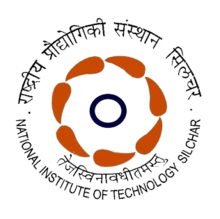An advanced heat transfer and fluid flow laboratory will be equipped to study a variety of heat and fluid flow phenomena, enabling researchers to investigate the principles of heat transfer and fluid dynamics in both theoretical and practical contexts.
Here’s a general overview of the components and equipment you might expect to find in such a laboratory:
- Basic Setup:
- Test Sections: Different types of channels/pipes for studying fluid flow and heat transfer.
- Heaters and Coolers: For heating or cooling the fluid.
- Thermocouples and RTDs: For temperature measurements.
- Pressure Taps and Manometers: For pressure measurements.
- Visualization Equipment:
- Particle Image Velocimetry (PIV): For velocity field visualization.
- Laser Doppler Anemometry (LDA): For velocity measurements.
- Smoke or Dye Injection Systems: For flow visualization.
- High-Speed Cameras: For capturing transient phenomena.
- Heat Transfer Equipment:
- Heat Exchangers: Different types (shell-and-tube, plate, finned-tube) to study their performance.
- Thermal Imagers: To visualize temperature distributions.
- Heated Plates: For studying natural and forced convection.
- Boiling and Condensation Setup: To study phase-change heat transfer.
- Fluid Dynamics Equipment:
- Wind Tunnels: For aerodynamic studies.
- Water Channels: For hydrodynamic studies.
- Rotameters and Flowmeters: For flow rate measurements.
- Pumps and Blowers: For creating the desired flow conditions.
- Turbulence Generators: To introduce turbulence into the flow.
- Advanced Measurement and Analytical Equipment:
- Hot-Wire Anemometry (HWA): For turbulence and velocity measurements.
- Phase Doppler Particle Anemometry (PDPA): For droplet sizing and velocity.
- Spectrometers: For studying radiation heat transfer.
- Computational Facilities:
- High-Performance Computing (HPC) Clusters: For computational fluid dynamics (CFD) simulations.
- CFD Software: Software like ANSYS Fluent, OpenFOAM, COMSOL, etc.
- Specialized Equipment:
- Microchannel/Microscale Heat Transfer Setup: For studying heat transfer at small scales.
- Cryogenic Heat Transfer Setup: For studies at very low temperatures.
- Supersonic Flow Setup: For studying flows at speeds greater than the speed of sound.
- Safety Equipment:
- Safety Glasses and Lab Coats: Basic personal protective equipment.
- Fire Extinguishers and Blankets: For any fire-related emergencies.
- First Aid Kits: For any minor injuries.
- Auxiliary Equipment:
- Data Acquisition Systems: To collect data from the various sensors and instruments.
- Control Systems: To regulate the conditions (like temperature, pressure, flow rate) in the experiments.
- Instructional and Theoretical Resources:
- Textbooks and Research Journals: For reference and continued learning.
- Software Licenses: For simulations, CAD design, data analysis, etc.
An advanced laboratory would be regularly updated with the latest technology and tools. Such a lab provides invaluable hands-on learning experiences for students and is crucial for cutting-edge research by professionals.
